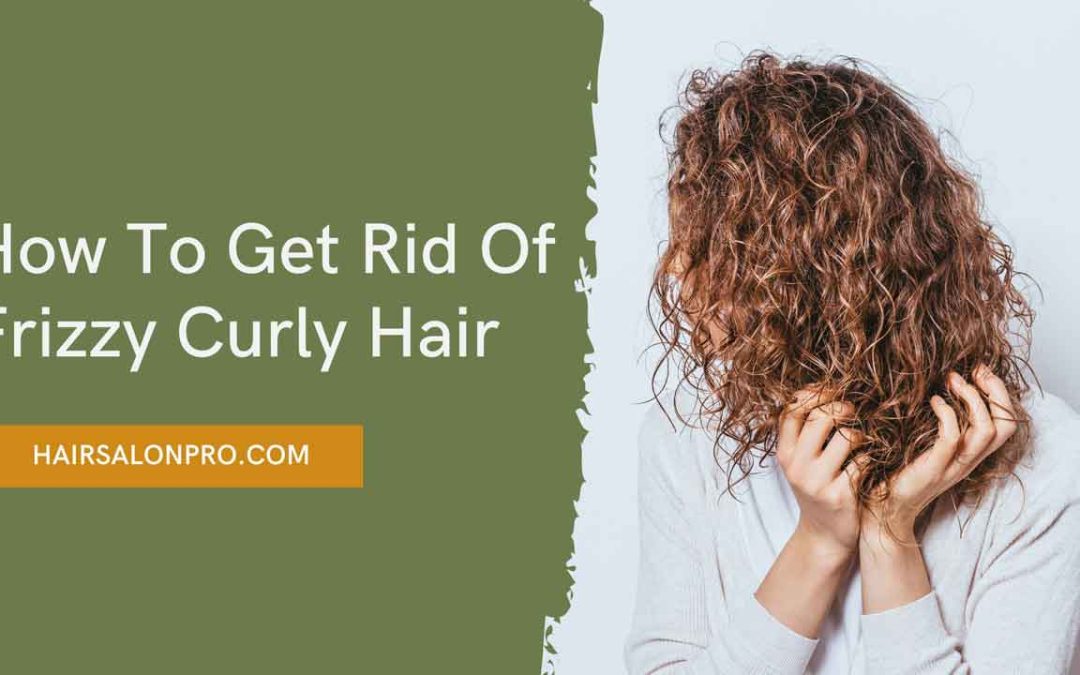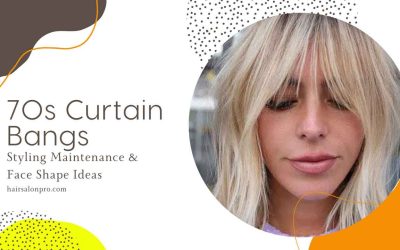Discover expert tips and techniques to tame frizzy curly hair and achieve smooth, defined curls.
This comprehensive guide covers causes, types of frizz, and effective solutions for all curl patterns.
Key Takeaways
- Optimize your washing routine with sulfate-free shampoos and cool water rinses
- Deep condition regularly to maintain moisture and prevent frizz
- Use the right styling techniques and frizz-fighting products
- Protect your hair while sleeping with silk or satin accessories
- Minimize heat styling and consider professional treatments for persistent frizz
How To Get Rid Of Frizzy Curly Hair
To eliminate frizzy, curly hair, regularly use sulfate-free shampoos and deep conditioning. Apply styling products to soaking wet hair, focusing on leave-in conditioners and curl creams. Use a microfiber towel to dry, and avoid touching your hair while drying. Protect your curls at night with a silk pillowcase or bonnet. Minimize heat styling and consider professional treatments like keratin or Olaplex for long-lasting results. Consistency in your hair care routine is critical to managing frizz and achieving smooth, defined curls.
Your Guide To Frizzless Curls
Are you tired of battling frizzy curly hair every day? You’re not alone.
Millions of people with curly hair struggle to tame their frizz and achieve smooth, defined curls.
In this comprehensive guide, we’ll explore the causes of frizz, types of frizzy hair, and most importantly, how to get rid of frizzy curly hair effectively.
Whether you’re looking for quick fixes or long-term solutions, we’ve got you covered with expert tips, product recommendations, and proven techniques to help you love your curls again.
Listen to the blog post and subscribe to our podcast.
Understanding Frizzy Curly Hair
What is Frizzy Hair?
Frizzy hair occurs when the outer layer of your hair (the cuticle) is raised, allowing moisture to pass through and swell the strands.
This results in hair that looks dry, puffy, and lacks definition.
For curly hair types, frizz can be particularly challenging as it disrupts the natural curl pattern and creates an unruly appearance.
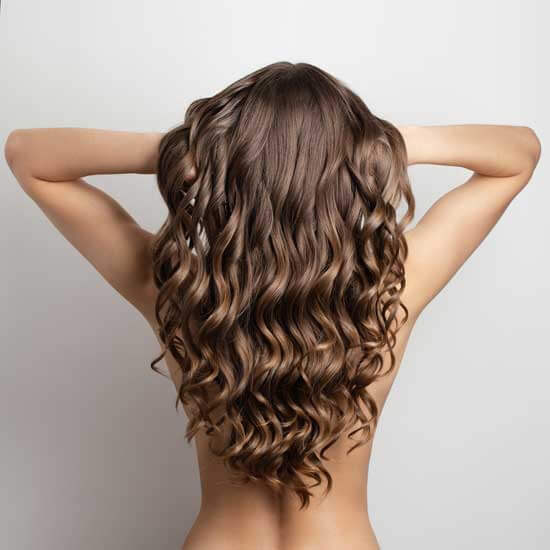

Causes of Frizzy Curly Hair
Understanding the root causes of frizz is crucial for effectively managing and preventing it.
Here are the main culprits behind frizzy curly hair:
- Lack of moisture
- Humidity
- Over-washing
- Heat damage
- Chemical treatments
- Rough handling
- Genetics
- Poor hair care routine
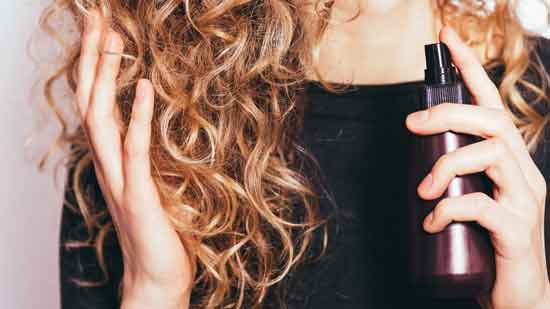
Types of Frizz
Not all frizz is created equal.
Identifying the type of frizz you’re dealing with can help you choose the proper treatment approach:
- Surface frizz: Fine, flyaway hairs on the outer layer of your hair
- Halo frizz: A ring of frizzy hair around the crown of your head
- In-wash frizz: Frizz that appears when your hair is wet
- Pouf frizz: Overall volume and puffiness throughout your hair
NEWSLETTER
Subscribe For Professional Hair Salon Business News

How To Reduce Frizz In Curly Hair: Expert Tips And Techniques
Now that we understand the basics of frizzy curly hair, let’s dive into the most effective ways to tame frizz and achieve smooth, defined curls.
1. Optimize Your Washing Routine
The first step in managing frizzy curly hair starts in the shower:
- Use lukewarm water instead of hot water to prevent cuticle damage.
- Opt for sulfate-free shampoos to avoid stripping natural oils.
- Co-wash (conditioner-only washing) between shampoo days to maintain moisture.
- Apply conditioner from mid-length to ends, avoiding the scalp.
- Rinse with cool water to seal the cuticle.
Expert Tip: “Overwashing can strip your hair of its natural oils, leading to dryness and frizz. For most curly hair types, washing 2-3 times a week is sufficient,” says celebrity hairstylist Maria Rodriguez.
2. Deep Condition Regularly
Deep conditioning is crucial for maintaining moisture and preventing frizz in curly hair:
- Use a deep conditioner or hair mask once a week.
- Look for products with ingredients like shea butter, argan oil, or keratin.
- Apply the product to damp hair and leave on for 15-30 minutes.
- Use a shower cap or warm towel to enhance penetration.
- Rinse thoroughly with cool water.
3. Embrace the Right Styling Techniques
How you style your curly hair can make a significant difference in frizz control:
- Apply styling products to soaking wet hair to lock in moisture.
- Use the “praying hands” method to distribute the product evenly.
- Scrunch your curls gently to enhance your definition.
- Avoid touching your hair while it’s drying to prevent frizz.
- Use a microfiber towel or an old t-shirt to dry your hair instead of a regular towel.
4. Choose Frizz-Fighting Products
Selecting the right products is essential for managing frizzy curly hair:
- Leave-in conditioners: Look for lightweight formulas that won’t weigh down your curls.
- Curl creams: These help define curls and provide moisture.
- Anti-frizz serums: Apply to damp hair to smooth the cuticle.
- Gel or mousse: Use for hold and definition, especially in humid conditions.
Product Recommendation: Our top pick for frizz control is the Curl Enhancing Smoothie by SheaMoisture. This rich cream helps to define curls, reduce frizz, and provide long-lasting moisture.
5. Protect Your Hair While You Sleep
Nighttime care is crucial for maintaining frizz-free curls:
- Use a silk or satin pillowcase to reduce friction.
- Try the “pineapple” method: Loosely tie your hair at the top of your head.
- Use a silk or satin bonnet to protect your curls.
- Refresh your curls in the morning with a light mist of water and leave-in conditioner.
6. Minimize Heat Styling
Heat styling can be a major contributor to frizz. If you must use heat:
- Always use a heat protectant product.
- Set your tools to the lowest effective temperature.
- Use a diffuser attachment when blow-drying to minimize frizz.
- Limit heat styling to once a week or less.
7. Consider Professional Treatments
For persistent frizz, professional treatments can provide longer-lasting results:
- Keratin treatments: Smooth the hair and reduce frizz for several months.
- Brazilian blowouts: Similar to keratin treatments but with a more natural finish.
- Olaplex treatments: Repair hair bonds to reduce frizz and improve overall hair health.
Caution: Always consult a professional stylist before undergoing any chemical treatments to ensure they suit your hair type and condition.
Prevention: The Key to Long-Term Frizz Control
While the above tips can help manage existing frizz, prevention is the best strategy for long-term frizz control:
- Stay hydrated: Drink plenty of water to keep your hair and body hydrated from the inside out.
- Eat a balanced diet: Include foods rich in omega-3 fatty acids, vitamins A and C, and biotin.
- Regular trims: Remove split ends every 6–8 weeks to prevent frizz from traveling up the hair shaft.
- Avoid touching your hair: Resist the urge to run your fingers through your hair throughout the day.
- Use a humidifier: In dry climates, a humidifier can help maintain moisture in the air and your hair.
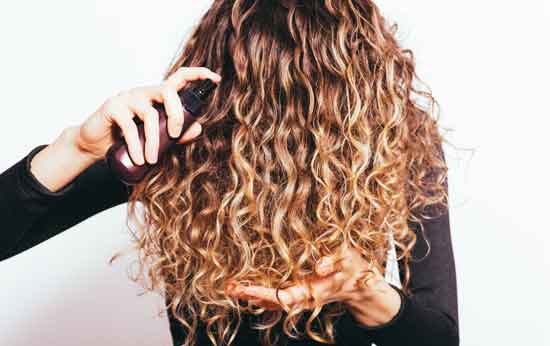
Quick Tips for Frizz Emergencies
Sometimes, frizz strikes unexpectedly. Here are some quick fixes for on-the-go frizz control:
- Keep a small bottle of anti-frizz serum in your bag for touch-ups.
- Use a boar bristle brush to smooth down flyaways.
- Apply a small amount of hand lotion to tame frizz in a pinch.
- Use a dryer sheet to reduce static and smooth hair.
- Dampen your hands with water and gently smooth over frizzy areas.

Conclusion: Embrace Your Curls
Getting rid of frizzy curly hair is a journey that requires patience, the right techniques, and suitable products.
By understanding your hair type, identifying the causes of frizz, and implementing these expert tips, you can achieve smoother, more defined curls you’ll love.
Remember, every curl is unique, so don’t be afraid to experiment with different methods and products to find what works best for you.
Embrace your natural texture and celebrate the versatility of your curly hair.
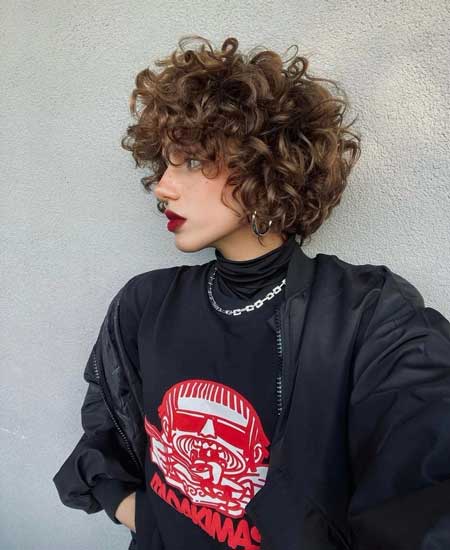
Commonly Asked Questions About Taming Frizzy Hair
How do I make my curly hair less frizzy?
To make curly hair less frizzy, start by using a sulfate-free shampoo and a moisturizing conditioner. Apply leave-in conditioner and define curls with a curl cream or gel while hair is still damp. Avoid towel-drying; instead, use a microfiber towel or old t-shirt to gently squeeze out excess water. Allow hair to air dry or use a diffuser attachment on low heat. Regular deep conditioning treatments and avoiding heat styling tools will also help reduce frizz and enhance your natural curl pattern.
Why is curly hair so prone to frizz?
Curly hair is prone to frizz due to its unique structure and moisture needs. The curved shape of curly hair follicles makes it harder for natural oils to travel down the hair shaft, leading to dryness. Additionally, the cuticle layer of curly hair is often raised, allowing moisture from the environment to enter and swell the hair shaft, causing frizz. Factors like humidity, heat damage, and harsh hair products can exacerbate this issue. Understanding your hair's needs and using appropriate products can help manage frizz effectively.
How can I get rid of frizzy curly hair in 5 minutes?
To quickly tame frizzy curly hair in 5 minutes, start by lightly misting your hair with water. Apply a small amount of leave-in conditioner or anti-frizz serum, focusing on the ends and frizzy areas. Use your fingers or a wide-tooth comb to distribute the product evenly. Scrunch your curls gently to encourage definition. If needed, use bobby pins or hair clips to secure any particularly unruly sections. Finish with a light mist of flexible hold hairspray to lock in smoothness and shine.
How do you restore frizzy curly hair?
To restore frizzy curly hair, begin with a clarifying shampoo to remove product buildup. Follow with a deep conditioning treatment, leaving it on for 15-30 minutes under a shower cap. Rinse with cool water and apply a leave-in conditioner. Incorporate a regular routine of moisturizing products, including curl creams or oils. Avoid heat styling and opt for protective hairstyles at night. Regular trims every 6-8 weeks will remove split ends. Lastly, consider your diet and stay hydrated, as internal health reflects in your hair's condition.
You Might Also Like These Articles
70s Curtain Bangs: Styling Maintenance & Face Shape
30 Years Industry Experience | Former Salon Owner | Certified Cosmetologist Discover the timeless...
70’s Hairstyles Thought To Never Be Worn Again – WRONG!
By Scott Farmer Professional Salon Consultant 30 Years Industry Experience | Former Salon Owner |...
How To Write A Good Review For A Hair Salon: Top Guide
30 Years Industry Experience | Former Salon Owner | Certified Cosmetologist Introduction Discover...

